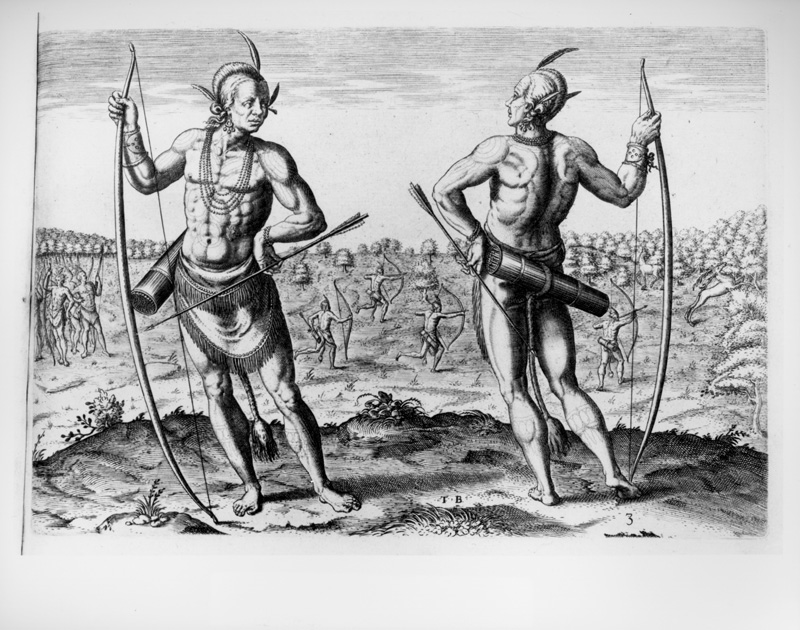November is Native American Heritage Month, a month set aside to recognize the significant contributions the first Americans made to the establishment and growth of the United States. Here at the Library of Virginia we have documents that tell the story of the Gingaskin Tribe. In 1641, the Accomac Indians, an Algonquin-speaking tribe located on the Eastern shore and part of the group collectively referred to as Powhatan Indians, became known as the Gingaskins when they accepted a patent from the English government for the remaining 1,500 acres of their ancestral lands in Northampton County. Various legal and boundary struggles with their English neighbors over the years reduced the lands reserved for the Gingaskins to 650 acres, which was patented again in 1680.
Over the years, Indian lands were often leased to outsiders by the state and county governments in order to help support Gingaskin members, most of whom chose to maintain a traditional lifestyle and not farm the lands. Great concern was exhibited by white neighbors about the Gingaskins intermarrying with free negroes and charges were made in petitions to the General Assembly in 1784 and 1787 that there were no more “real” Indians left on the reservation and therefore the land should be given to whites who could better protect it, by which they meant farm it in the traditional English way.
Beginning in 1792, the General Assembly had required the Northampton County court to appoint trustees to manage the reservation lands and settle any disputes that arose. The trustees of the Gingaskin reservation, never very enthusiastic about their duties, convinced (or forced) the remaining members to accept a division of the land among themselves in 1812. The General Assembly passed a law in 1813 to eliminate the Gingaskin reservation and divide the land between the official members, deeding the divided plots to individuals in the same way as anyone else in Virginia would own land. This was the first instance of termination or legal allotment of reservation lands and detribalization of its owners in United States history. Three-fourths of individual Gingaskin owners retained their lands until 1831 when most were forced out following the Nat Turner insurrection.
For more information about the history of the Gingaskins and other Indians of eastern Virginia, see Dr. Helen C. Rountree’s book Pocahontas’s People: The Powhatan Indians of Virginia Through Four Centuries (Norman, OK: University of Oklahoma Press, 1990). The Library of Virginia’s holdings include Northampton County land records relating to the Gingaskin lands, 1785-1815, (Barcode 1168316) and Legislative Petitions of the General Assembly, 1776-1865, (Accession 36121) concerning the division and selling of the Gingaskin lands dated 26 November 1784 and 10 October 1787.
-Sarah Nerney, Senior Local Records Archivist

















Many descendants of this community still survive in various parts of Virginia and North Carolina. And form some of the Native American Communities living here today. My early ancestors are from the Watkins and Guy families of Northhampton and Accomac Counties,Virginia
My family is from Northampton County with Gingaskin heritage. My sister and Aucare interested in re connecting with others of similar backgrounds. If anyone is interested in do doing please contact me @ loisjuliette@yahoo.com
I have a facebook page that is designed to organize the Accomac/ Gingaskin Descendants please request to join.
I have been researching the Gingaskin Tribe for about six months. I’m really anxious to find my descendants (Porters) or anyone from the Tribe ( Tribal Ancestry)
I am a Descendent of the Guy and Drew family that were Accomac indians listed as free people of color in Virginia.
I am a descendant of James Allen Porter of the Accomac tribe. I’m trying to learn as much as I can about any family group that was deeded property in 1619
Was the sWEAT family part of the Gingaskin ?
I have heard that the West’s were Gingaskin. Does anyone have any information on them?
I just learned today that My family heritage traces back to Martha Francis Smith from the Gingaskin tribe! Been looking for that lead for a long time!